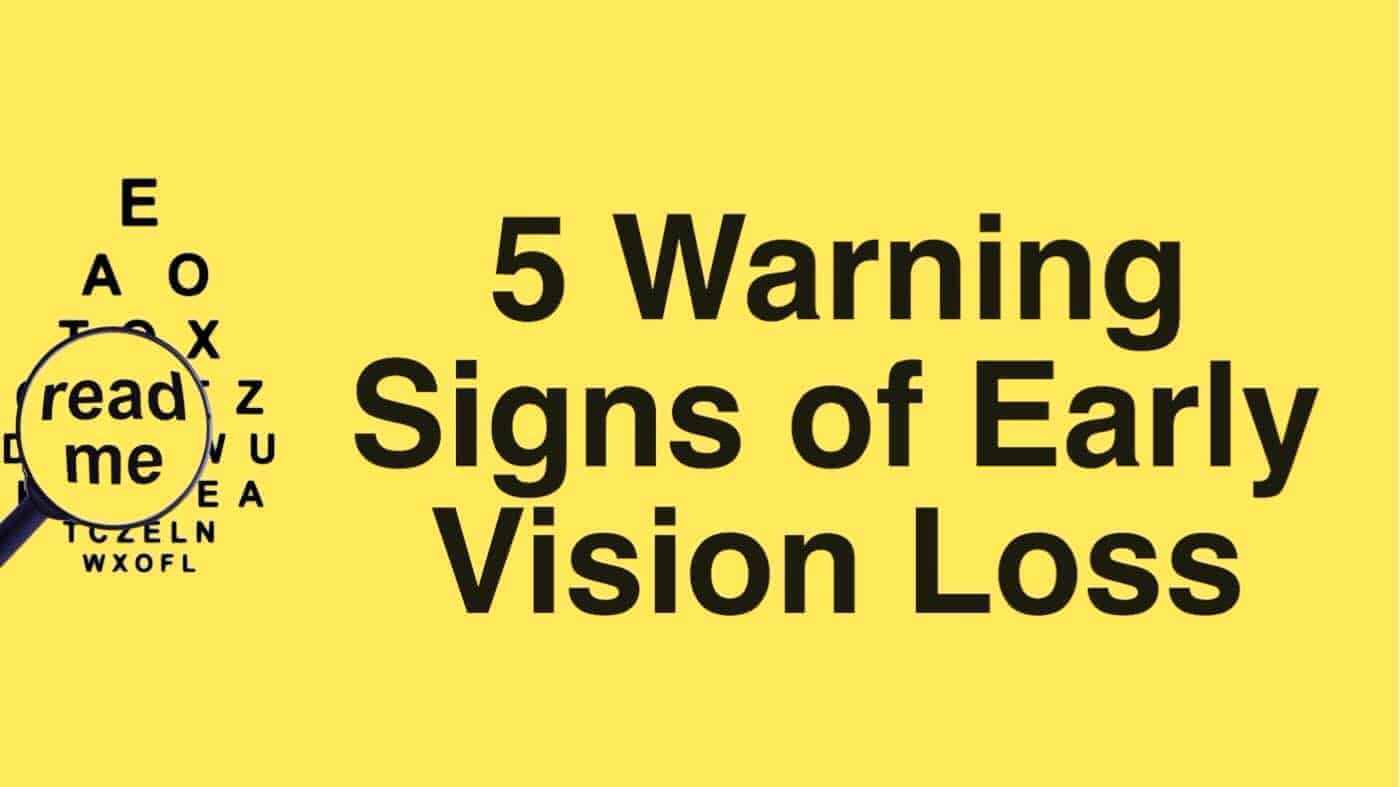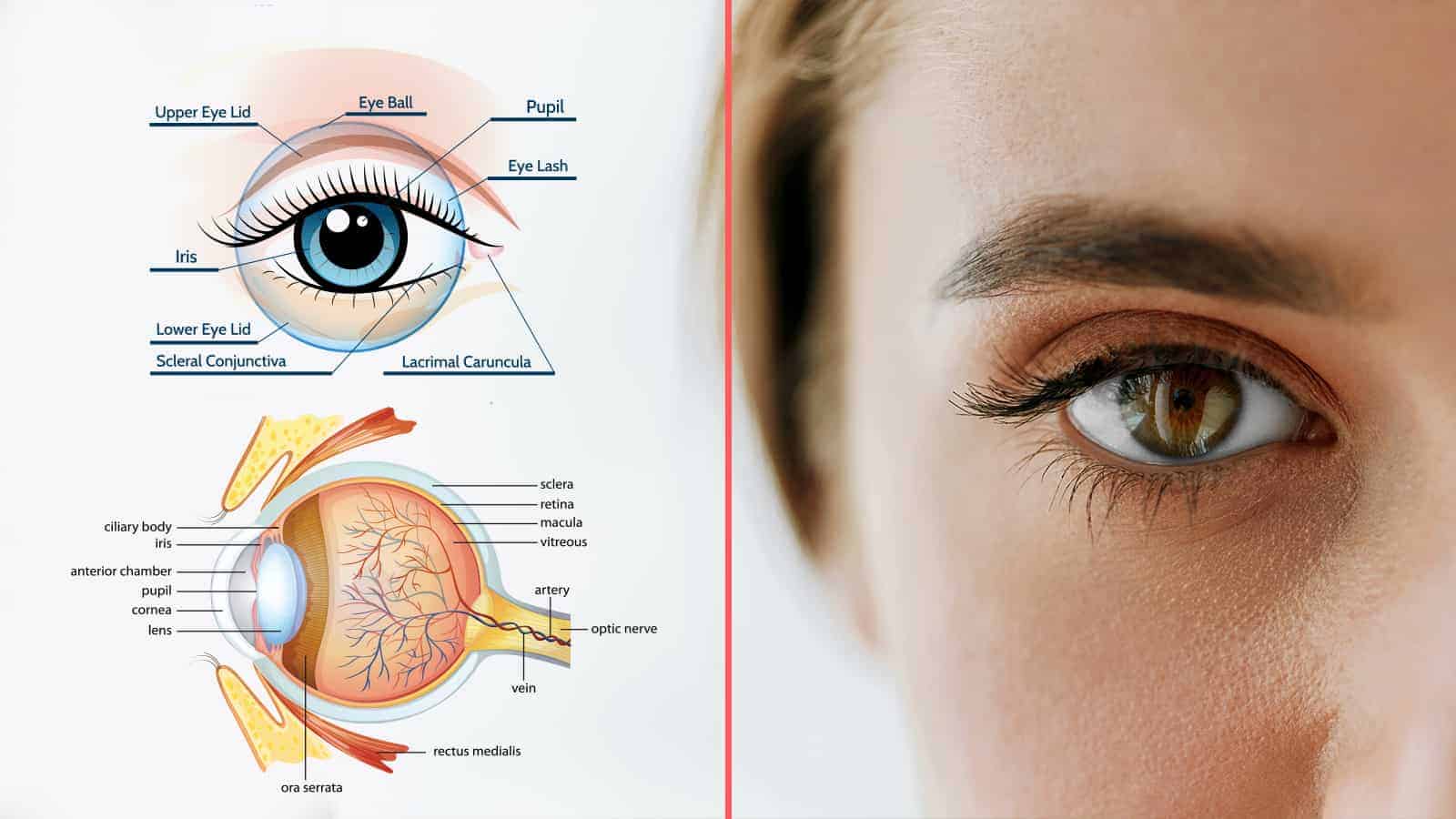According to Prevent Blindness America, twice as many people will be blind in 2030 as there are today. The projections are based on estimates of self-reported vision impairment from The Lighthouse National Survey on Vision Loss. – Sightconnection.org
The prospect of losing one’s vision is an admittedly frightening one. However, unlike many other health conditions, eyesight tends to worsen quite gradually. Many people that end up in the optometrist’s office recognize that their worsening vision has become a frustrating physical barrier – and one that affects their ability to enjoy life.
While many eye-related conditions are not a serious detriment to one’s health, it’s still important to err on the side of caution when a loss of vision is noticed. Most eye care experts recommend having a comprehensive eye exam every year or two.
Here are five early signs of vision loss
Worsening vision can be very subtle, almost to the point that it’s barely noticeable. That said, there are still signs to be aware of. Of course, if detected, a trip to the eye doctor should be in order.
1. Vision is repeatedly clear/fuzzy/clear/fuzzy
Not only is intermittent visual acuity frustrating, but it can also be a sign of an underlying condition. A chronic disease – such as Type 2 diabetes – is a potential culprit. High blood pressure is also possible, as both states restrict and ultimately damage the retina’s blood vessels and create vision loss.
If noticing such symptoms, it’s necessary to schedule a doctor visit. Diabetes and high blood pressure are severe health conditions. Thus, it is paramount that your eye doctor makes a diagnosis to mitigate collateral health problems.
As for inconsistent vision patterns, attempt to pay attention to when it occurs. Some people complain that performing specific tasks – reading, writing, knitting, etc. – is when such patterns are more easily recognizable. It’s important to understand that the longer this continues without medical intervention, the more serious the health consequences.
2. Blurred central vision
Often appearing as a dark or empty patch, this could be a symptom of macular degeneration. Age-related macular degeneration (AMD) is the most prolific cause of vision loss in people over 50. The root cause of AMD is physical changes to the retina (macula) that directly affects visual acuity.
One way to check for AMD is to look at any straight line. If the line appears wavy, macular degeneration is a strong possibility. In addition, those diagnosed with AMD often complain of difficulties with reading signs and performing tasks that require near-sighted vision.
Schedule an eye exam right away to determine the root cause. Some forms of macular degeneration can be treated, though such variations are rare.
3. Fading or yellowing of colors
When the lens of one or both eyes is obstructed, colors can appear to fade or take on a yellowish tint. Such symptoms can result from cataracts – a “clouding” of the usually transparent lens of the eye. Those with cataracts often compare their vision to looking through a fogged-up window. Unfortunately, cataracts are also a common condition – by age 80, more than half of all Americans will have cataracts or have undergone surgery to correct them.
As with many eye conditions, cataracts tend to worsen gradually. This is because small portions of protein bind together and attach to the retina – this results in images losing their sharpness. At later stages, the lens takes on a brownish/yellowish tint rather than a clear one. Again, cataracts are treatable, so please seek out an eye doctor.
Other symptoms of cataracts are decreased night vision, sensitivity to light, seeing “halos” around lights, and double vision.
4. Eyelids appear irregular
This particular sign, though not on or in the eye, can create visual distortions. Though there are a few different possible root causes, one of them is skin cancer. Tissue areas around the eyes are very delicate, making these areas especially prone to initial signs of cancer. Different strains of carcinomas can alter the typical appearance of a person’s eyelids, which makes it imperative that medical guidance is sought.
Generally, if skin cancer is indeed the underlying cause, these cases are very rarely fatal. However, severe visual problems – even blindness – can result if not treated. As such, please see a doctor if one or both eyelids appear irregular.
5. Flashes of light or debris in vision
This is the only sign that is of a sudden (and very noticeable) nature. When seeing sudden “debris” in the field of vision – spots, flashes, strings, etc. – it could precede retinal detachment. While this certainly sounds painful, there’s no pain at all. Yet, retinal detachment is an emergency and one that requires surgery.
Getting down to the physiological aspects, retinal detachment occurs when the retina separates from a nourishing bed of oxygen and blood vessels. If it sounds terrible, that’s because it is. The longer one goes without surgical intervention, the longer the retina is deprived of oxygen necessary to sustain normal function. In worst cases, vision loss is possible without the appropriate care.















 Community
Community

